Horror manga still can’t get the anime adaptation the genre deserves. Here’s why.
Anime is a celebrated art form that covers just about every genre out there–romance, fantasy, action, slice of life–you name it. But the one thing this medium can’t seem to get right is horror.
We’ve all been there, especially if you’re a horror fan. There have been plenty of horror anime adaptations over the years, and most of them have only fallen flat on their face. It’s a rough landscape; fans are left dissatisfied with the direction, the atmosphere, and how the adaptation treated the original source material. And as time goes on, it feels like there just aren't any decent horror anime to look forward to anymore.
But why is that exactly?
The art of horror manga
Let’s go back to the source material: manga. Horror manga works because the medium knows how to play with your senses, and most importantly: your imagination. If you think horror is only about the gore, the loud jumpscares, or the crazed killer running after you, then you’re wrong.
Real horror thrives in building up a sense of unease in your psyche. A shadow moves at the corner of your eye, and suddenly your mind sees a monster peeking from your periphery. A bunch of scribbles on a page seem to eerily portray the semblance of a distorted face. Every page turn becomes a carefully crafted setup for dread, and every panel pulls you closer to that feeling of impending doom.
Manga plays with this kind of horror instinctively. It knows how to stretch that silence, how to make you linger on an image just long enough for it to crawl under your skin. It lets your imagination take over, it allows you to take your time to build the tension.
The Master of Horror himself, Junji Ito, has all but perfected this.
Ito has a specific style of writing and illustrating a horror story, and he does it incredibly effectively. His panels are meticulously hand drawn, with black ink emphasizing atmosphere, facial expressions, and twisted limbs, with beautifully delicate precision that elevates the grotesquerie of his works.
The way he arranges his panels deserves just as much credit. Ito provides brief moments of looming dread in certain pages, say, the closeup of a horrified face, or a sinister smile, before plunging you into terror at the turnof a page.
An example that mirrors this is Chapter 11 of Uzumaki, “The Umbilical Cord”, where the featured character, Kirie, is rattled by unusual occurrences in the hospital she is staying at. The tension increases as events turn even more mysterious and confusing, reaching towards a horrifying climax as she discovers just what is wrong.
The scene is established in page 349:
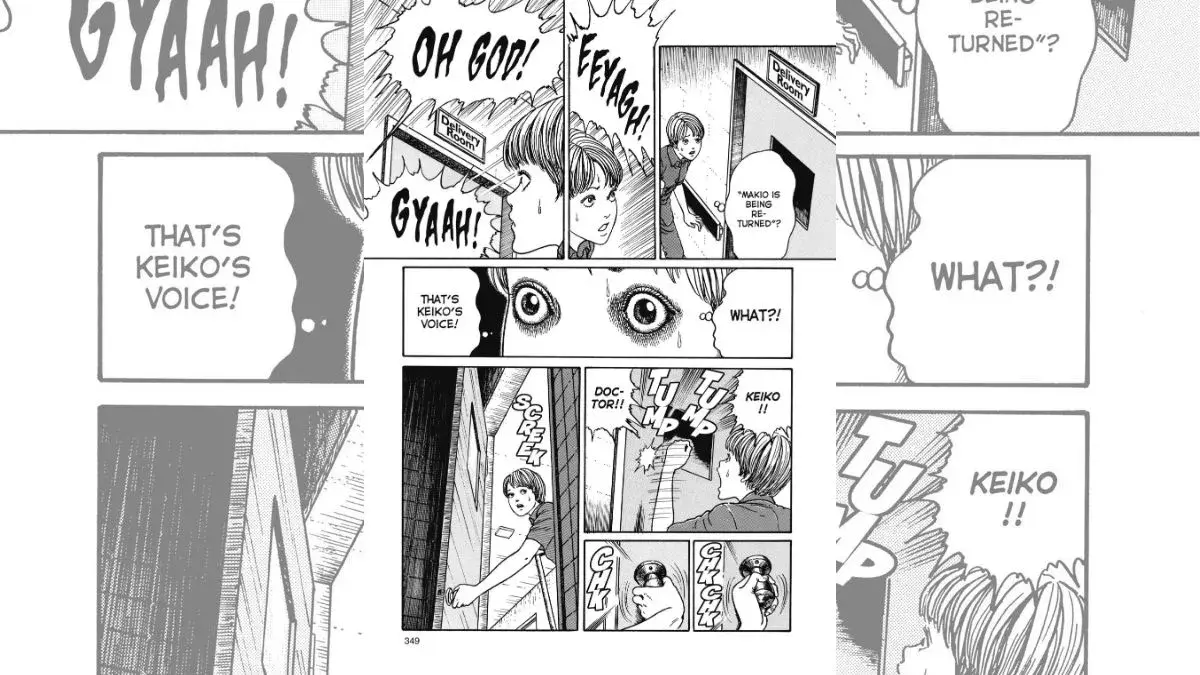
Considering how books are bound, page 349 is the front-facing side of a page, while page 350 is at its back-facing side. That page flip already builds a sense of anticipation. This calculated way of scaring the reader is effective. Just what is it that’s terrifying the character so much? What kind of malformed monster is waiting behind the door? That anticipation festers, growing into a heavy pressure that makes the reader hesitate–torn between wanting to turn the page and wanting to look away, making for some superb immersion.
So what will you see when you do turn to the next page? It's this:
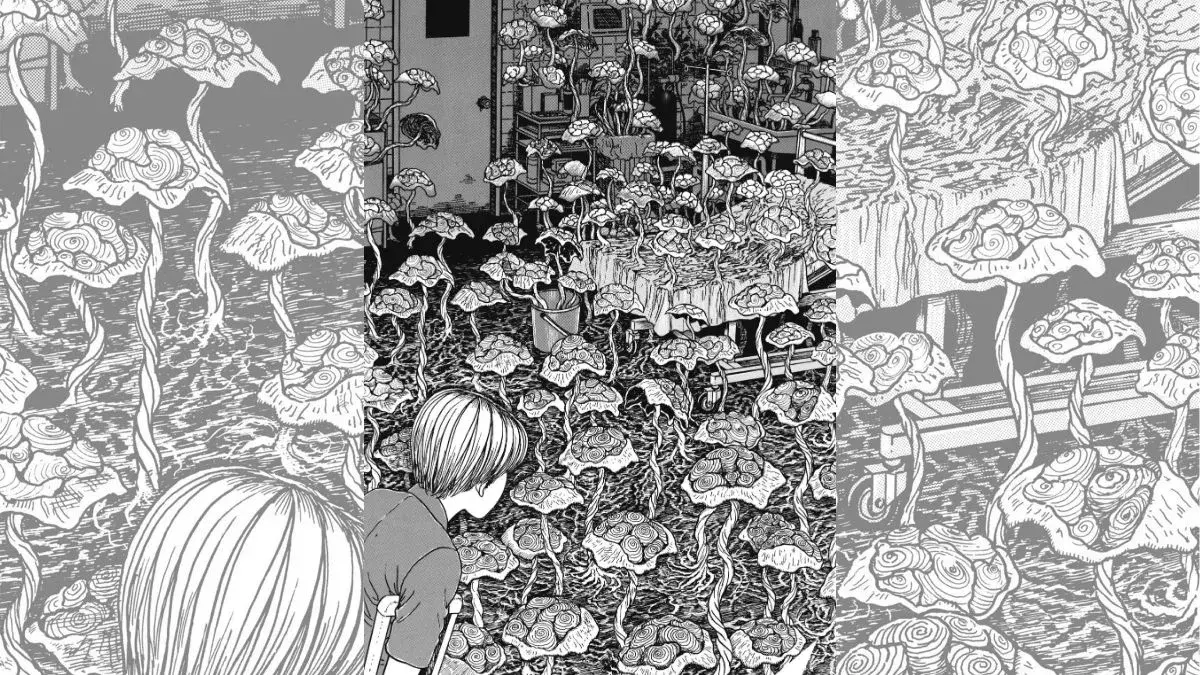
Effective, right?
Horror lost in adaptation
The thing is, anime lacks that tactile immersion. What works in manga–the lingering silence, the pressure in between panels, the tension that prickles your skin–doesn’t easily and neatly translate into animation.
Anime thrives in dictating pace and timing; watchers can’t savour the atmosphere well enough to feel the intention of terror. There’s no control on how you can immerse yourself in each scene building up into that one scare, making it a more “just sit there and watch” experience than what was originally intended. The horror is no longer personable.
Sure, adaptations work to fill this gap with motion, sound, and colour, but the noise takes away the one thing horror needs the most: the silence in between.
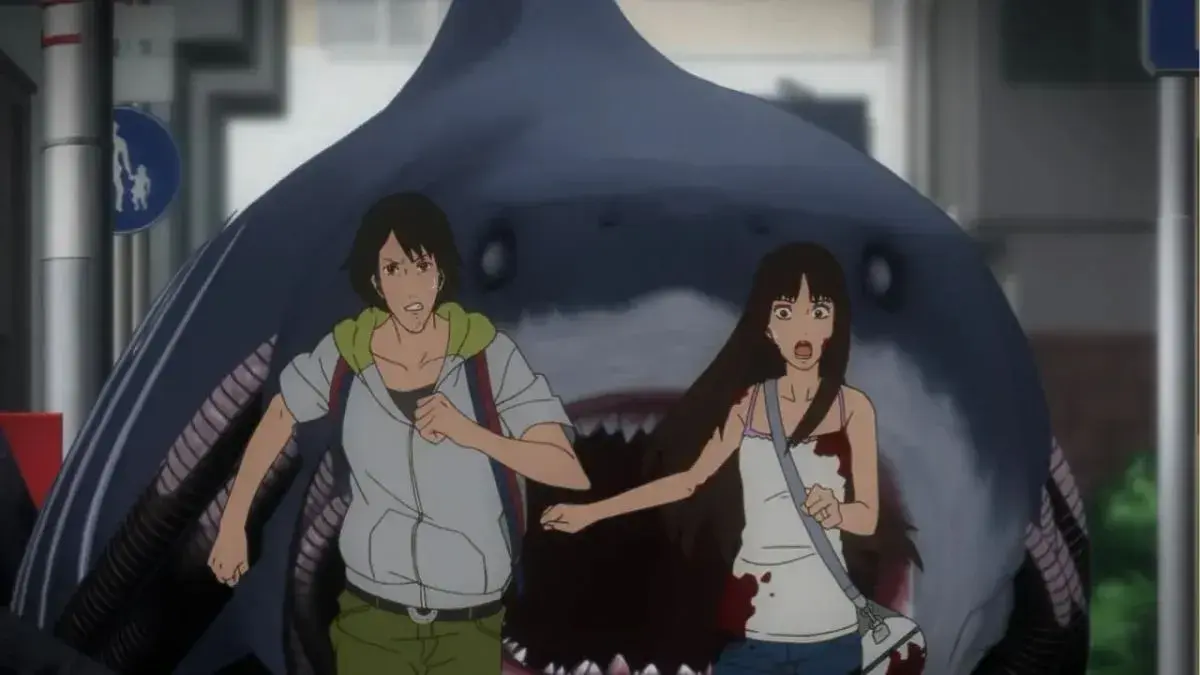
Anime adaptations for Junji Ito’s works, like “Gyo”, “Uzumaki”, “Junji Ito Collection”, and “Junji Ito Maniac”, may be accurate with replicating his art style, but the atmosphere suffers greatly with directorial choices that aim to bombard readers with music, transitions, cuts, and pans. The silence never lasts long enough for a watcher’s imagination to take hold–the monsters are already there even before you can think about how exactly they can come up onscreen.
Another factor that makes horror anime adaptations painfully subpar comes down to technical execution.
Anime itself is a demanding industry. Studios struggle with packed schedules, rushed deadlines, and constant fan pressure, all at the mercy of a pre-set budget. And as the horror genre isn’t as commercially appealing as other categories like slice-of-life, action, or romance, there’s little incentive or dedication to actually make a horror adaptation that can truly do its source justice.
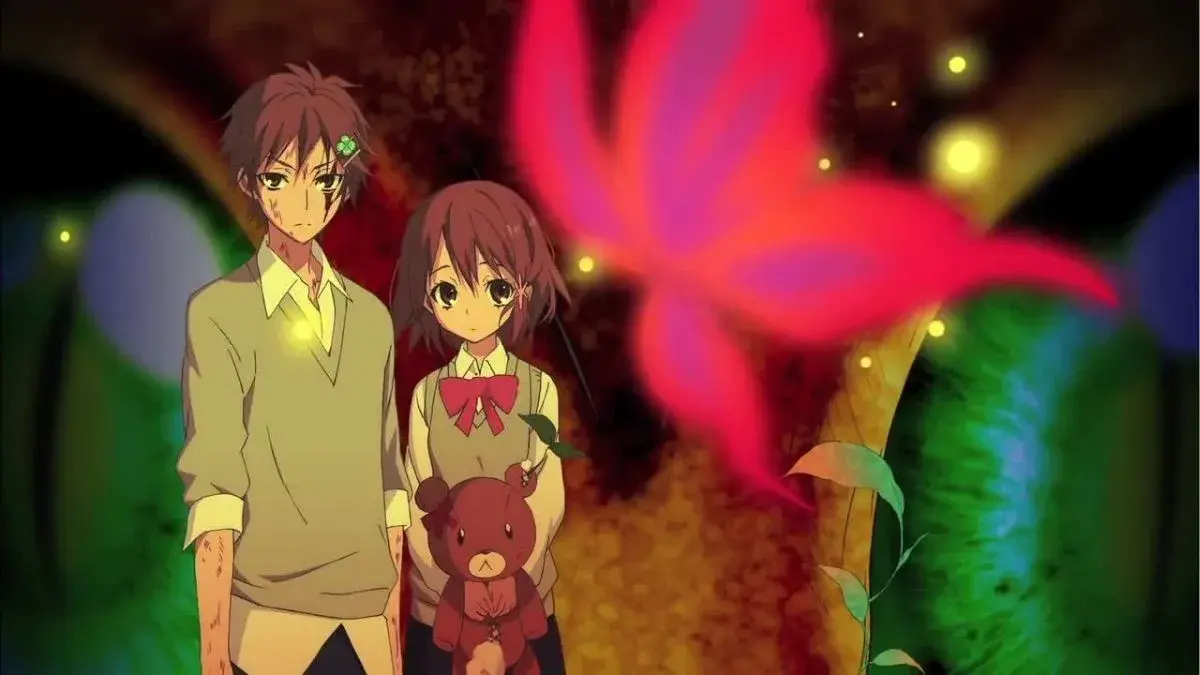
A much-disliked (and most likely you’ve never heard of) title that suffered from poor direction and obvious budget constraints is “Pupa”. The story may seem promising at first, showcasing an intriguing premise where a pair of siblings undergo a horrifying ordeal through the younger sister’s transformation into a cannibalistic monster, but each episode was painfully short–clocking in at seven minutes each– and left a lot to be desired.
Given its short runtime, the result was a jumbled mess of poor animation and disjointed writing; a shame, considering the manga had genuine potential.
Horror anime that work
But even with these setbacks, there are horror titles out there that are actually, really, truly great.
Where the various Junji Ito anime adaptations fail in stylistic atmosphere, and where “Pupa” fumbled with technical aspects, gems like “Shiki”, “Mononoke”, and even the recent Summer 2025 title “The Summer Hikaru Died” thrive.
These series understand that horror doesn’t have to rely solely on grotesque imagery to drive the point home; they master mood, rhythm, and the terror of the unknown.

“Shiki” is a slow-burn folk horror set in a rural village that becomes a paranoid gauntlet of utter despair. The beauty of its horror lies in story-telling and pacing. As the events unfold, viewers realise that the true terror hidden within the village are its own occupants, consumed by primal fear and desperation. It seeps into your psyche through its gradual escalation of colour and sound, building toward a fever pitch that mirrors the madness overtaking its characters

“Mononoke” however, goes in the opposite direction when it comes to visual direction. The anime and movie series leans on surrealism rather than subtlety, with its highly stylised art style reminiscent of ukiyo-e prints. It does not lean on gore or eldritch monsters to hone in on the terror–its focus is on the psychological unravelling of its characters through breathtaking renditions of Japanese folklore, where they are devoured by desire and guilt, further elevated by a technicolor palette and theatrical framing.
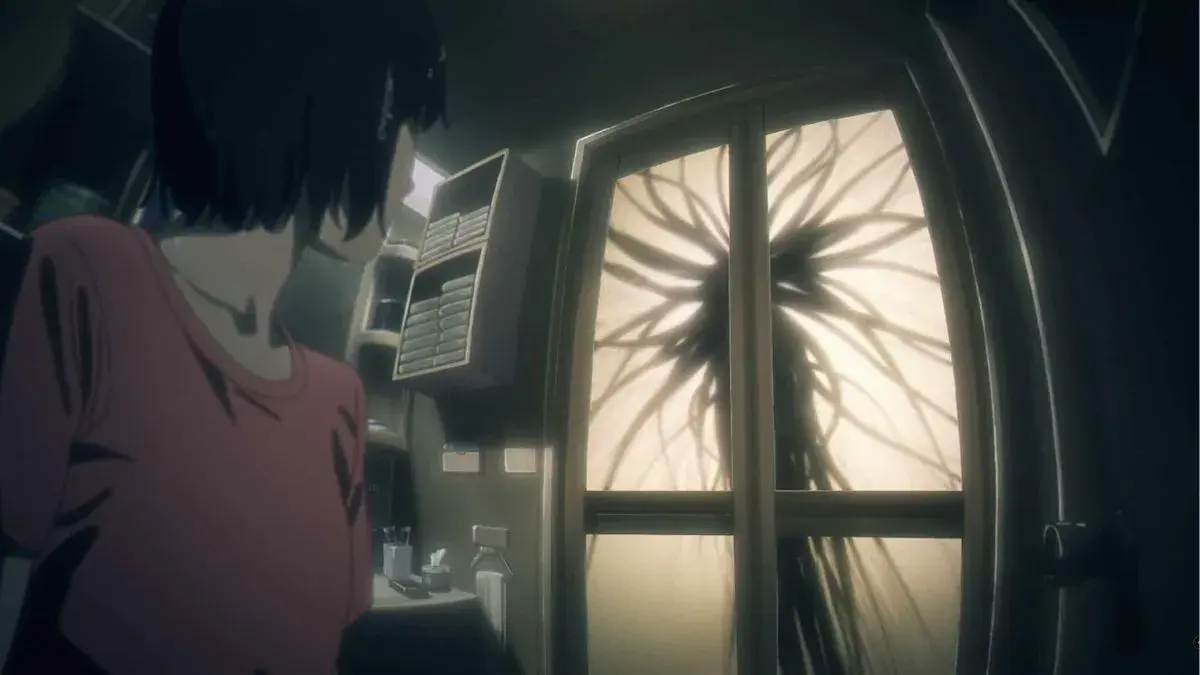
“The Summer Hikaru Died” takes a more intimate, emotional approach, balancing both visceral Lovecraftian horror with the rotting realisation that the person you love is no longer there. The anime does play with the terrifying presence of its monster, who acts more like a child discovering the world than a true imminent threat. However, its frightening and psychological aspects round out the show in a real, even humanistic way.
Some other horror anime titles that do justice to the genre are:
- Boogiepop Phantom–which plays with psychological dread, thrill, and mystery
- Monster–a psychological thriller that makes you question humanity
- Yami Shibai–a minimally-animated, short episode, stylistic anthology series that adapts real Japanese urban legends
- Another–balances both supernatural and human horror
These examples prove that horror in anime can thrive, but only when creators trust atmosphere over excess, and let fear breathe between the frames.
What horror anime needs to get right
If there’s anything horror anime can learn from its manga counterparts, it’s that true terror thrives in restraint. Anime adaptations more often than not overly rely on explanations, presentation, and production, and in the end provide a structured experience that does not allow imagination to wander.
The unsettling unease that makes great horror comes from the mind, and turning viewers into passive spectators does little to make a work enjoyable or genuinely terrifying.
To get horror right, anime needs to understand the power behind implication. What’s unseen, what’s suggested, and what lingers in the spaces between scenes are often far more horrifying than what’s shown outright. The silence breeds anticipation and expectation, building up dread more effectively than any elaborate monster design. It’s a delicate balance that’s difficult to master, but when done right, provides an invitation for the audience to actively participate in the horror.
Many horror anime struggle because they mistake excess for intensity, yet excessive elements like gore, violence, and suffering do little to elevate the experience. When creators allow tension to simmer and fester rather than explode, the fear becomes intimate and personal–restraint is precision that allows horror to find its true power.
Truthfully, horror is simple. It builds on the emotion of fear and lingers far longer than it should. It’s not something that appears in one scene and vanishes in the next second. Fear stays, rots your senses, and sticks to your mind like a parasite.
And that’s what horror anime needs to remember: fear isn’t found in what’s loudest or bloodiest, but in that creeping dread that refuses to leave you, even after the credits roll and the screen fades to black.

